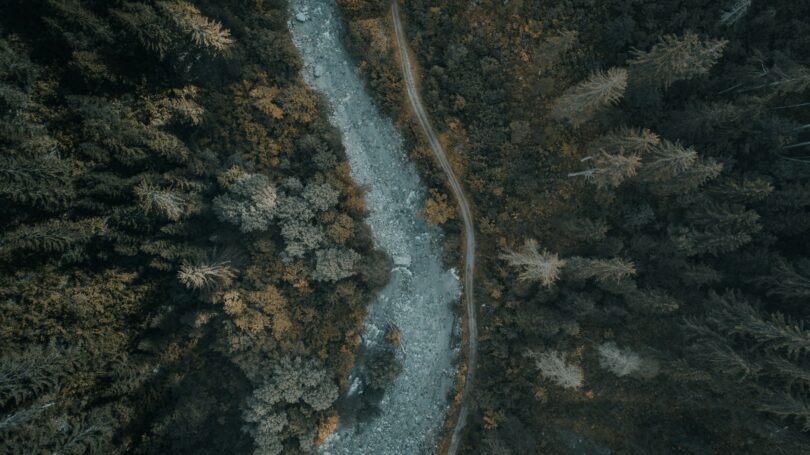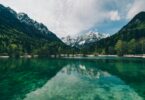The River That Boils Everything Alive
Imagine standing by a serene river surrounded by lush green forests, and then realizing that the river is not just warm — it’s boiling. So hot, in fact, that anything that falls into it is instantly cooked or dies in excruciating pain. Welcome to the Shanay-Timpishka, often called “The Boiling River of the Amazon” — one of the most extraordinary natural wonders on Earth.
This river has puzzled scientists, inspired myths, and challenged our understanding of geothermal activity. Stretching through the heart of the Amazon rainforest in Peru, the boiling river has been the subject of legends and spiritual beliefs for centuries. In this article, we will explore the origin, discovery, science, myths, and current concerns surrounding this incredible river.
Geographical Location: Where Is the Boiling River?
The Shanay-Timpishka flows in the Mayantuyacu region of the Peruvian Amazon, near the town of Pucallpa, in the Ucayali region. The river is about 6.4 kilometers (4 miles) long and can reach temperatures as high as 93°C (200°F) — close to the boiling point of water at sea level.
Despite its boiling temperatures, the river is not located near a known active volcano or magma chamber, which makes it an anomaly in geothermal science. This isolated hot river is hidden deep in the Amazon jungle and is sacred to the local Asháninka people.
Discovery: How Did the World Learn About the Boiling River?
While locals had known about the river for centuries, the wider world remained unaware of its existence until Andrés Ruzo, a Peruvian-American geophysicist, brought it to international attention.
In 2011, Ruzo was researching geothermal energy in Peru when he recalled a childhood story told by his grandfather about a river that boiled alive everything that fell into it. At first, Ruzo thought it was a myth. But to his amazement, when he ventured deep into the Amazon, he found that the legend was real.
Ruzo’s scientific investigations and his TED Talk titled “How I Found a Mythical Boiling River in the Amazon” brought global attention to this natural marvel.
Temperature and Deadly Power
The river’s temperature varies along its length but averages between 45°C and 93°C (113°F to 199°F). In some places, it’s hot enough to boil water instantly.
Local reports and studies have shown:
-
Small animals that fall in — such as frogs or birds — die within seconds.
-
The intense heat peels off skin and boils from the inside out.
-
Only certain heat-adapted life forms can survive in some parts of the river.
Because of this, the Shanay-Timpishka has earned the nickname “The River That Boils Everything Alive.”
The Science Behind the Boiling River
One of the most baffling aspects of the Shanay-Timpishka is its distance from any volcano or geothermal hotspot. Most boiling water sources are near tectonic plate boundaries or volcanic activity, but this river is not.
So how does it get so hot?
1. Geothermal Heating via Deep Earth Faults
Ruzo and other scientists believe that the river is heated by deep geothermal faults in the Earth’s crust. Rainwater seeps into the ground, travels far beneath the Earth’s surface, and is superheated by hot rocks before emerging back into the river system.
This is a non-volcanic geothermal phenomenon, which is rare and not well understood.
2. High Thermal Gradient
The surrounding rocks store and conduct heat efficiently, helping to maintain the river’s high temperatures even without volcanic activity.
3. Hydrothermal Vents and Hot Springs
Dozens of hot springs and fumaroles (steam vents) are connected to the river and pour boiling water into it, further raising its temperature.
Cultural and Spiritual Significance
To the indigenous Asháninka people, the Shanay-Timpishka is sacred. The name means “boiled with the heat of the sun,” and the river is believed to be spiritually alive.
Shamans and local tribes use the river and its hot springs for:
-
Healing rituals
-
Spiritual cleansing
-
Ceremonial bathing
The river is part of the Mayantuyacu healing center, a retreat led by local shaman Juan Flores Salazar, where people come for spiritual journeys and traditional Amazonian medicine.
To the locals, the river is not a scientific curiosity but a living spirit with power and purpose.
Ecosystem: Life Around a Deadly River
Though the river is deadly to most animals and humans, the surrounding rainforest is still teeming with life. The extreme heat creates a unique micro-ecosystem.
1. Thermophilic Organisms
In less extreme parts of the river, thermophilic (heat-loving) bacteria and algae thrive. These organisms may hold clues to new medicines, antibiotics, and even clues about life on other planets.
2. Tropical Biodiversity Nearby
Though the river itself is lethal, the area around it is rich with biodiversity, including:
-
Jaguars
-
Monkeys
-
Exotic birds
-
Medicinal plants
The contrast between the river’s destructive heat and the surrounding life-filled jungle is part of what makes this place so fascinating.
Dangers of the Boiling River
The Shanay-Timpishka is not a place for a casual swim or adventure. The risks include:
-
Severe burns or death from falling in.
-
Unpredictable water flows and geysers.
-
Inaccessible terrain, making rescue difficult.
Even skilled researchers must take extreme safety precautions when visiting the river, including thermal suits, heat-proof gear, and working with local guides.
Read More: Inside Japan’s Hotel Staffed Entirely by Robots
Environmental Threats and Conservation
Unfortunately, this natural wonder is under threat. Several environmental challenges are affecting the boiling river:
1. Deforestation
Illegal logging and land clearing for agriculture threaten the surrounding forest, which could impact the hydrological system feeding the river.
2. Pollution
Mining and logging activities increase the risk of contamination, which could damage the river’s fragile geothermal balance.
3. Lack of Protection
The river is not part of a national park or protected area, leaving it vulnerable to exploitation.
4. Tourism Pressure
As the river gains global attention, unregulated tourism poses new threats. Without proper guidelines, increased human activity could disturb the river’s ecosystem and spiritual sanctity.
Scientific and Educational Importance
The Boiling River has become a field site for scientific exploration and education, offering opportunities to study:
-
Geothermal anomalies
-
Extremophile microbes
-
Amazonian ecosystems
-
Cultural and spiritual traditions
Andrés Ruzo founded The Boiling River Project to promote education, conservation, and sustainable tourism in the area. The project works closely with local communities and emphasizes that scientific discovery and indigenous wisdom can go hand in hand.
Global Comparisons: Are There Other Boiling Rivers?
While hot springs and geysers exist around the world — such as Yellowstone in the USA or Rotorua in New Zealand — no other known river matches the length and intensity of Shanay-Timpishka.
Some comparable features include:
-
Dallol Hydrothermal Field, Ethiopia: Extreme heat, acidic pools.
-
Pamukkale, Turkey: Warm terraces formed by mineral deposits.
-
Yellowstone National Park, USA: Hot springs and geysers with thermophilic life.
But none are quite like a long, boiling river in the heart of a rainforest, far from volcanoes.
Lessons from the Boiling River
The Shanay-Timpishka teaches us important lessons:
1. Nature Is Still Full of Mysteries
Even in the 21st century, the Earth continues to surprise us. Hidden corners of the world still contain wonders that science can’t fully explain yet.
2. Indigenous Knowledge Matters
The Asháninka had known about the river for generations. Their knowledge — passed down through stories and spiritual practices — guided modern scientists to one of the most important geothermal discoveries in recent history.
3. The Urgency of Conservation
Without protection, treasures like the Boiling River could vanish or be degraded. The need for sustainable tourism and local empowerment has never been greater.
Conclusion
The Boiling River of the Amazon — the Shanay-Timpishka — is one of nature’s most astonishing and mysterious creations. Flowing through a remote jungle in Peru, this river defies geological expectations, boils alive anything that enters it, and holds deep spiritual and cultural meaning for the indigenous people who live nearby.
Thanks to the work of researchers like Andrés Ruzo and local shamans like Juan Flores Salazar, the world is beginning to appreciate this place not just as a natural wonder, but as a symbol of how modern science and ancient wisdom can come together to uncover and protect the unknown.
As we continue to explore the mysteries of the Earth, let the story of the Boiling River remind us that the planet we live on still holds secrets — boiling, deadly, beautiful secrets — waiting to be respected and preserved.





